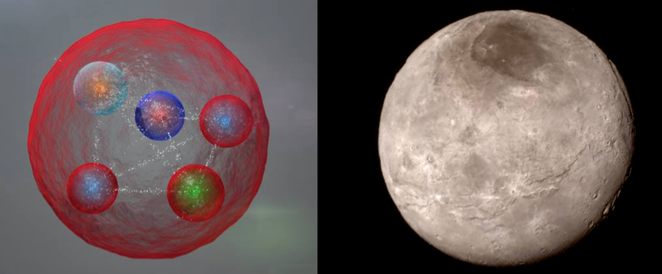 This week science woke up in the morning and, instead of making coffee and reading a journal before going to work, stretched. It was one of those “make-me-feel-good” morning stretches, after a long night of sleep.
This week science woke up in the morning and, instead of making coffee and reading a journal before going to work, stretched. It was one of those “make-me-feel-good” morning stretches, after a long night of sleep.
Some of you may do yoga every morning, just to start your system moving the way it should be moving, without pain and stiffness. Some of you extend your arms, having your fingers be as far from each other as possible, trying to reach two opposite sides of the bedroom in the same time (Try it now! It feels good, right?). Science did the same thing. It was a big, wide stretch, reaching all the way from subatomic to uber-macro level (FYI that is not a proper scientific term).
Stretches like these are good, because they give science confidence, observers show amusement and respect, and above all, as stretches should, they make everyone feel good. The stretch science took this summer was bigger than ever. It reached all the way from pentaquarks, (subatomic quarks combined together in the Large Hadron Collider for the first time), all the way to the (dwarf) planet Pluto, that was reached by NASA’s New Horizons spacecraft after a 9.5 year long journey in space. Nice, long, big stretch.
In the mean time in the Investigative Biology Labs, students of the Cornell Summer Sessions took their first practical exam, where they demonstrated how to use a microscope and spectrophotometer, and show that they understood the scientific method. They demonstrated that they are able to state a hypothesis, set up an experiment, and know how to analyze data using statistics. How do I dare to put this on the same page with pentaquarks and Pluto you may ask? Because this is how it all starts.
“This is how these budding scientists start to stretch, and realize that it feels good. They start to learn new skills, new methods, and how to use new instruments. The further they stretch, the better it feels. It relaxes mind and body; it makes you feel like there are no limits.”
They start with learning simple skills together, such as the ones we teach, and from there, stretch toward all different directions. Look around you…you can see stretching scientists everywhere. They may reach the opposite walls of their labs first, but they don’t stop there, they keep stretching, some until their last breaths.
We will always remember mid-July of 2015. It was a rainy, cold summer when science stretched 3.6 billion miles from pentaquarks to Pluto, and it felt good. It was a good stretch. Now lets move onto that coffee and breakfast before heading up to Cornell, because the age of discoveries will just never end. – Dr. Sarvary